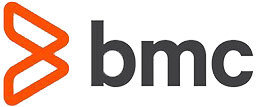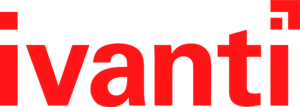Best IT Management Software Solutions 2021
The category of IT management software covers a wide range of offerings: remote management of computer systems, IT Service Management (ITSM), IT infrastructure management, Application Performance Management (APM), Security Information Event Management (SIEM), and many other areas. Consequently, the tools covered in this guide span the gamut of management areas.
Each vendor has their own approach. Some entered the field via security, some via application performance, and others via Help Desk applications that needed to connect remotely into user systems. Regardless of their origins, they have all expanded into the wider world of IT management.
Read more: Biggest Challenges Rewards of Enterprise SaaS
Best IT Management Software Solutions
CIO Insight evaluated multiple vendors operating in the IT management space. Here are our top picks, in no particular order:
TeamViewer
Value Proposition
![]() TeamViewer Remote Management is a central IT management solution that keeps a company’s IT infrastructure healthy, stable, and secure. Features include active management, monitoring, and tracking of all remote devices and network devices. It also encompasses the central deployment of software and patches for managed devices to improve performance and increase overall IT security and efficiency.
TeamViewer Remote Management is a central IT management solution that keeps a company’s IT infrastructure healthy, stable, and secure. Features include active management, monitoring, and tracking of all remote devices and network devices. It also encompasses the central deployment of software and patches for managed devices to improve performance and increase overall IT security and efficiency.
Key Differentiators
- Customizable to fit a company’s remote management policies and requirements
- Regulate the intervals of automatic checks, real-time alerts, and automated responses
- In-house IT teams can spend time on other areas of the infrastructure
- Integrated functions that are scalable
- Remote Access and Control can be accessed within the same management console
- Remote Management offers endpoint protection
- Leverages machine-learning to protect against malware and zero-day exploits
- Automated backup
- Offers the ability to monitor website uptime, page load speeds, and transactions
ReadyWorks
Value Proposition
![]() ReadyWorks helps large enterprises with IT transformation, eliminating operational inefficiencies Key Differentiators
ReadyWorks helps large enterprises with IT transformation, eliminating operational inefficiencies Key Differentiators
- Collects, cleans, and analyzes data from all IT and business systems
- Automates planning based on data and migration readiness
- Orchestrates workflow execution for both people and systems
- Provides reporting and real-time insights into the status of IT programs
- Uses a library of connectors to collect, clean, and normalizes data
- Connector ecosystem includes ServiceNow, Configuration Manager, InTune, Okta, and others
- Bi-directional connectors allow orchestration of complex workflows across platforms
- Automated communications and user scheduling
- Enterprise-grade security and scalability
- Adaptable platform allows for orchestration of nearly any infrastructure program
New Relic
Value Proposition
![]() New Relic One is a data analysis platform for all software metrics, events, and logs. It also helps software teams detect anomalies, discover root causes, and optimize performance. Whether the architecture is microservices or monoliths, containers or VMs, cloud or data center, it can deploy, monitor, and scale services.
New Relic One is a data analysis platform for all software metrics, events, and logs. It also helps software teams detect anomalies, discover root causes, and optimize performance. Whether the architecture is microservices or monoliths, containers or VMs, cloud or data center, it can deploy, monitor, and scale services.
Key Differentiators
- HIPAA-compliant observability platform for monitoring performance of systems containing PHI
- Manages all telemetry data, including metrics, events, logs and distributed traces
- Provides a single source of truth, offering full-stack analysis tools and applied intelligence capabilities in one place
- Strong regulatory posture: SOC2, GDPR, FedRAMP, and HIPAA
- Provides context from logs, infrastructure and applications, distributed tracing, and serverless functions
- App performance at-a-glance summary gives the user insight into web transaction response time and transaction traces
- Drill down to fix the problem at the root, optimizing app performance
- Monitor all aspects of the business on one screen
- No need to program pre-configured alerts
- Automatically groups alerts and informs engineers based on time and frequency
- Positioned Value Proposition
 Whether on-prem, hybrid, or multicloud, Splunk Infrastructure Monitoring delivers real-time infrastructure monitoring and troubleshooting for all environments. It provides transparency into usage and the capacity to minimize operational and cloud costs. In addition, it can stop context switching and simplify operations with tools that work across systems, teams, and tools.
Whether on-prem, hybrid, or multicloud, Splunk Infrastructure Monitoring delivers real-time infrastructure monitoring and troubleshooting for all environments. It provides transparency into usage and the capacity to minimize operational and cloud costs. In addition, it can stop context switching and simplify operations with tools that work across systems, teams, and tools.Key Differentiators
- Monitors and provides observability of cloud environments
- Provides a solution to visualize and analyze relevant performance metrics across infrastructure, services, and applications
- Boasts a mean time to detect up to 80% faster than competitors
- AI-driven alerts
- Transparency and usage control provided Value Proposition
 ScienceLogic discovers all components within the enterprise across physical, virtual, and cloud environments and stores the data in a data lake. It then helps IT to understand relationships between infrastructure, applications, and business services, using this context to gain actionable insights. The company claims 60% reduction in incidents, and a 25% improvement in time to recovery.
ScienceLogic discovers all components within the enterprise across physical, virtual, and cloud environments and stores the data in a data lake. It then helps IT to understand relationships between infrastructure, applications, and business services, using this context to gain actionable insights. The company claims 60% reduction in incidents, and a 25% improvement in time to recovery.Key Differentiators
- Consolidates big data from all IT tools and data sources into a real-time data lake
- Exchange and optimize cross-ecosystem data for visibility
- Auto-remediation of issues
- Auto-mapping and tracking of relationships across infrastructure, clouds, applications, and business services
- Multi-directional integrations to automate actions at cloud scale.
BMC Helix
Value Proposition
 BMC Software has arranged its Helix IT Service and Operations Management suite in alignment with ITIL best practices. It includes modules for chatbot, digital workplace, discovery, ITSM, business workflows, and cloud-native microservices. It comes with built-in AI and machine learning capabilities.
BMC Software has arranged its Helix IT Service and Operations Management suite in alignment with ITIL best practices. It includes modules for chatbot, digital workplace, discovery, ITSM, business workflows, and cloud-native microservices. It comes with built-in AI and machine learning capabilities.Key Differentiators
- Users can choose to deploy on-premise, SaaS, multi-cloud, and hybrid
- ITSM module can run on choice of public clouds: AWS, Azure, IBM, or BMC
- Resolve incidents faster with intelligent, context-aware, and proactive incident matching
- ITIL 4-compliant best practices for service management processes
- Guided processes on mobile and web, a drag-and-drop change calendar, and automated and contextual collision detection with impact analysis
- Scalable service view configuration management for ITOM
- Offers class structure, data and service models, federation, reconciliation and normalization, and agentless application and dependency mapping
- Supports a variety of service request workloads at scale
- Cognitive capabilities that automate classification, assignment, and routing of incidents, as well as cognitive email analysis and response.
- Ability to track operating level agreements and contracts from external providers
Ivanti Service Manager
Value Proposition
 Ivanti Service Manager evolved from the merger of HEAT and Landesk to offer IT management, chatbots, telephony support, third-party service integration, and contract management. It includes a workflow designer and engine that adapts to changes in the market and shifts in the business.
Ivanti Service Manager evolved from the merger of HEAT and Landesk to offer IT management, chatbots, telephony support, third-party service integration, and contract management. It includes a workflow designer and engine that adapts to changes in the market and shifts in the business.Key Differentiators
- Run it as a single product or as one element of a suite
- SaaS and on-premises options
- Flexible incident management, including analytics to deal with inbound ticket requests from any channel
- Problem management utilizes information from other elements within the enterprise for automated resolution processes
- User configurable support of change workflow and business process
- Service asset and configuration management enable the handling of IT changes quickly
- Includes dashboards, reporting, knowledge management, mobility, and self service
- Review events over selected time periods, track MTBF, and report service availability against SLAs
- Ivanti was the original service desk solution in the 1980’s
EasyVista Service Manager
Value Proposition
 EasyVista Enterprise Service Management Platform includes IT management, enterprise process automation, intelligent knowledge management, and micro apps technology for building apps, portals, and dashboards). It is available as SaaS and on-premise.
EasyVista Enterprise Service Management Platform includes IT management, enterprise process automation, intelligent knowledge management, and micro apps technology for building apps, portals, and dashboards). It is available as SaaS and on-premise.Key Differentiators
- Automatic knowledge search locates any related known errors, knowledge articles, news or major incidents
- Resolutions from knowledge can be copied to current incidents
- Alerts can be received from third-party monitoring tools, analyzed, and then trigger events such as recording, notification, or creating an incident
- Changes are categorized based on change catalog records that also define the related workflow
- Impact analysis lets you understand the impact of a change based on the CMDB relationship
- Assets/CIs are linked to define the dependency map; business services are tracked and linked to CIs
- Request management starts with the service catalog; workflows are configured and associated to every service
- Microsoft Cognitive Services are used to interpret user needs
Key Features of IT Management Applications
These days, IT management software solutions tend to adopt more and more predictive and preventive analytics capabilities. Another area common to most vendors now is extending their on-premises software with cloud-based versions and tools.
This had led to increasingly sophisticated management products that incorporate areas such as business workflows, artificial intelligence (AI), virtual agents, chatbots, machine learning, and ease of use.
Other areas that are often part of IT management include the following.
Incident Management
There are many types of incident that can occur in IT. Some are vitally important, many are not. Incident management should be able to help IT identify priorities with automation features that simplify the process.
Problem Management
Problem management exists to assist IT via processes and activities that manage the lifecycle of problems that could happen in an IT service. The purpose is to prevent problems from happening and resolve incidents rapidly.
Change Management
If changes are not tracked, a great many challenges are likely to result. For example, if a server virtualization project is initiated without detailing all the processes, services, storage connections, and dependencies involved, then chaos could erupt. The latest change management modules sometimes provide risk analysis to highlight potential issues in advance.
Service Asset/Configuration Management
Maintaining an accurate record of all information about the many configuration Items (CIs) is needed to deliver IT service.
Service Desk
The service desk provides a point of contact to ensure users receive help for requests. These can vary from the routine to full-blown emergencies.
Read next: 7 Security Tasks To Automate To Match Cybersecurity Threats
